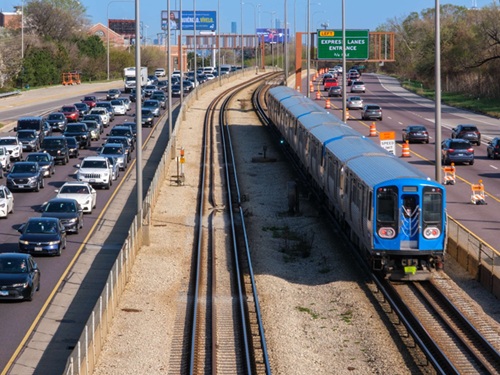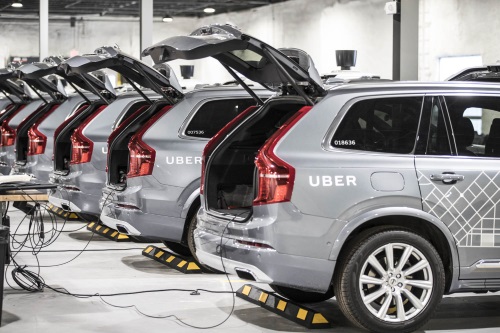Ride hailing firm Uber committed on September 8 to become a “fully zero-emission platform” by 2040, with 100 percent of rides ordered via its online platform taking place in zero-emission vehicles, on public transit, or via micro-mobility options.
[Above photo by Uber.]
The company also said it plans to have 100 percent of rides take place in electric vehicles (EVs) in U.S., Canadian, and European cities by 2030, as well as reach “net-zero emissions” from its corporate operations by 2030.

“The world is at a critical juncture, and we all have a role to play,” explained Dara Khosrowshahi, Uber’s CEO, in a statement.
“We’ll seek to build the most efficient, decarbonized, and multimodal platform in the world for on-demand mobility,” he added. “While we’re not the first to set ambitious goals in transitioning to EVs, we intend to be the first to make it happen. Competing on sustainability is a win for the world, and today we challenge other mobility platforms to transparency, accountability, and more action.”
To achieve those goals, he said Uber would undertake four key initial steps:
- Expanding Uber Green to make it easier for riders to choose to travel in hybrids or EVs.
- Committing $800 million in resources to help hundreds of thousands of drivers transition to EVs by 2025.
- Investing in our multimodal network to promote sustainable alternatives to personal cars.
- Being transparent and accountable to the public along the way.
Several state departments of transportation are engaged in projects that dovetail with Uber’s broad 20-year “zero-emission” plan.
The Rhode Island Department of Transportation, for one, is providing free access to EV recharging stations situated at two of its park and ride commuter lots through the end of 2020 part of a pilot program to encourage and support broader use of EVs across the state.

Both Florida and Virginia tapped their respective share of Volkswagen Settlement funds in mid-July to support a range of “clean technology” investments, including EV recharging infrastructure, zero-emission all-electric port cargo handling equipment, and the purchase of all-electric vehicles for state government fleet use.
The Florida Department of Transportation also became one of the nation’s biggest EV market “cheerleaders” in June as the Essential State Infrastructure law signed by Governor Ron DeSantis (R) gave the agency a central role in developing a “master plan” to encourage EV usage and to develop strategies to build more charging stations throughout the sunshine state.
That law, which went into effect on July 1, also called on the agency to plan, design and build staging areas for public emergency provisions along the Florida Turnpike system.
Also in June, a new Electric Vehicle Charging Study compiled by DriveOhio – a division of the Ohio Department of Transportation – outlined a statewide strategy to help expand EV use within Ohio, such as by building EV charging stations at least every 50 miles at specific locations along interstate, state, and U.S. route corridors.
 Nation
Nation


